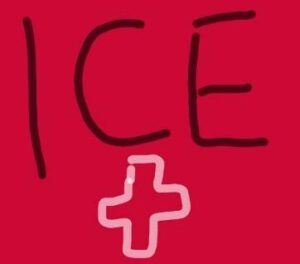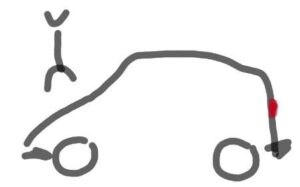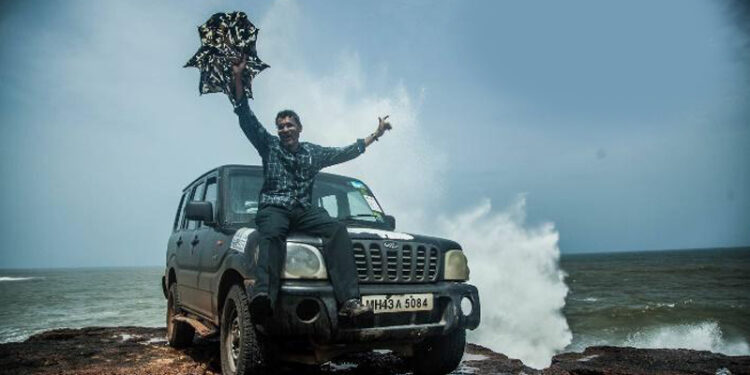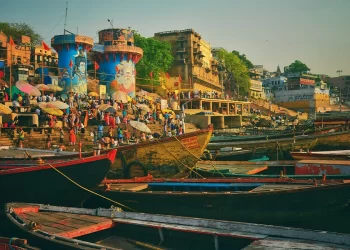Meet HV Kumar aka the “Human GPS” of India pioneering the largest and the most respected online network of car enthusiasts and bikers HiVay King Club. Through this online platform, HV Kumar has been guiding and inspiring travellers en route their destinations. He has travelled the length and breadth of this country. He is an encyclopedia of knowledge, a vociferous reader and above all, he remembers the remotest of roads on his fingertips. Let’s hear from the legend himself.
 1 ROUTE PLAN & INFO
1 ROUTE PLAN & INFO
There is this online digital map which gives me a route instantly – Right?
Wrong!
When going on a long road trip, plotting your route is not a simple and automated task. First, you have to have a clear idea what are your destinations. Second, you must decide the sequence in which you will cover the places you want to visit. Third, you must plot the correct route – avoid messy roads, take town bypasses & cut down on turn backs and route redundancies. Four, review the travel ecosystem – restaurants, fuel pumps, hotels & other facilities – beforehand so that you know exactly what you can expect and when. Such detailed planning does not mean you cannot drive around in a carefree fashion, but it helps set the tolerances and ensures fulfilment of the drive objectives. Example, No sorry outcomes of reaching Agra on a Thursday night not knowing that Taj Mahal is closed to the public on Friday! You must know the names of the big towns en route, so that you can get support if in need. It makes no sense to backtrack because you overlooked a place of tourist interest that you overshot due to poor planning. Some like to follow signages on the road, some like digital maps in mobile phones – choose your own way!
You can always put your head out of the window and ask the Gramin guy, “Which way to Rome”, but he may not understand your Italian!
 2 A DRIVE PLAN & STRATEGY
2 A DRIVE PLAN & STRATEGY
Plan? Strategy? What is this – a corporate think tank session?
Destinations Unlimited, But Time Limited. A Drive Plan has to clearly chart out what you will do on each day of your drive – start and end points of the journey, where are the traffic bottlenecks, whether (and which sector) you will have to drive after dark, and so on. Starting your drive at 5 am or 9 am can lead to totally different outcomes due to various factors beyond your control. That is where your Drive Strategy has to be intelligent to optimise the drive – you cover the most in the least time, you do not have unpredictable outcomes (like peak hour traffic jams, unsafe or weather-affected roads after dark or road closures in jungles and hills). Typically, in the early mornings, large cities see lots of incoming traffic, but if you are driving out, you can expect clear roads ahead. Don’t be stupid to make an ill-thought plan driven by irrational desire or unrealistic targets; the drive plan has to be balanced so that you reach the appropriate places – for lunch, dinner, refuelling or sightseeing – and you do not end up battling deadlines or time overruns. Always work your plan to your capacity and need, don’t blindly go by what some online digital map promises to reach you…
Get your Drive Plan & Strategy right – and you will reach your destination just like a plane or train that is on time!
 3 ICE – AND TACKLING EMERGENCIES
3 ICE – AND TACKLING EMERGENCIES
On the road, what is predictable is unpredictability. The only thing that you can control is the steer wheel of your car. A good motorist is a good Risk Manager. Anyone who thinks himself invincible should not be on the road. Imagine What-If scenarios. What will you do if you have an accident – or a medical emergency on the road? Do you have the wherewithal to tackle unexpected situations? You need cash if you have to be admitted to a hospital for treatment, your closest relatives or friends have to be contacted! At the site of the accident, your wallet & mobile phones first get stolen – so how does anyone know who you are? The sensible motorist always has his ICE (In-Case-of-Emergency) Info available in his car – maybe written down in his car ownership documents or even an info slip with the names & mobile numbers of who is to be contacted if needed. Carry cash on your person at all times, the digital world may be far away, and in such dire circumstances, cash is the king. You are also advised to carry your Medical Insurance ID cards at all times when you drive far away from home. Remember, Indian HiVays have the worst medicare facilities!
In Unknown lands, you are an Unknown. Bridge the info gap. Let the world know who you are – that could be your saviour when you are in no position to help yourself.
 4 I AM OK, YOU ARE OK – BUT THE CAR IS NOT
4 I AM OK, YOU ARE OK – BUT THE CAR IS NOT
For many motorists, having a car breakdown is the most terrifying thought on their minds when they go on a road trip. There are many who don’t know how to change a punctured tyre; there are even some who don’t know how to open the bonnet – well, even if they knew, do they understand what to look for under the hood?
Can cars break down? Yes of course, they can & they will! But before you get on the road, make sure your car is well-maintained, and no glitches remain unresolved.
Basic knowledge of car mechanicals & ability to do simple tasks yourself – like changing a fuse – will help you drive many more miles. Calling a 1800 number is not the solution in itself, but some diligence in reading the car Owners’ Manuals, Service Manuals, adhering to preventive maintenance schedules and “listening” to your car “complain” when it has a problem are part of the “toolkit” for a good motorist.
The world outside can be mean, insincere, incapable & greedy – so don’t blindly trust what your car “Service” Advisor says or the local mechanic who tries to hoodwink you with a long expensive listing to make the car can run again. Remember, you may not get the mobile network to call anyone for help where your car breaks down, but check if you can continue driving the car with due care.
Make sure you have all info about car service centres and the friend who you think knows more about cars than you do!
Murphy’s Law: A flat will occur when you are without a spare.
 5 CARRY THE RIGHT THINGS IN THE CAR
5 CARRY THE RIGHT THINGS IN THE CAR
You need to charge 2 mobiles – and your car has just 1 power point.
You have a tyre puncture & you cannot find the Stepney or the jack.
The PUC is past its validity date.
Brake oil is leaking and you do not have spare oil to top it up. A Fire Extinguisher would have been extremely helpful in fighting that car fire. Attack the Attacker with a Pepper Spray.
You know it is a fuse blow out, you know how to fix it, but you did not carry a spare fuse.
Your specs broke, you can’t see, don’t have a spare – or the specs specifications.
“I am locked out of my car!”
A Car Dash Cam that could be that vital forensic evidence to play Sherlock Holmes against those who pin the blame on you in the event of an accident!
No, the list is not endless. Most of these situations can be foreseen, many of them can be handled easily and preparing in advance to overcome these obstacles is not too difficult. You may have to do some shopping for accessories, and your “road travel kit” has to be different from your regular travel kit, you have not only yourself but also a car whose health you have to take care of.
Sometimes, you may have to have a back up to a backup. And think out of the box on what situations you may face while on the road.
 6 FIRST IS FIRST AID
6 FIRST IS FIRST AID
Most cars simply don’t have First Aid boxes – and their owners don’t care. If and when you get injured, before the doctor sees you – or an ambulance reaches you – there may be some medical solutions that you can carry with you. And you have to tackle those routine medical ailments too –headache, stomach ache/ diarrhoea, nausea and pain – and carrying medicines is not going to take up space in your car. Those who suffer chronic sicknesses – say, Diabetes – should remember to carry essential medicines. The driver of the car should exercise cautious when popping in tablets – avoid medicines that induce drowsiness, slow down reflexes & cause after-effects that could impair your safe driving.
Never assume that all medicines you may need are available off the shelf anywhere and anytime. Equip your First Aid box fully & sensibly – and don’t forget to check expiry dates.
Take care of your health. Unwell drivers are Unsafe drivers. When your co-passengers fall ill, you can face disruption in your trip, lessen the impact as much as you can.
 7 ROTI, PAANI & MOBILE
7 ROTI, PAANI & MOBILE
Road journeys can be unpredictable. It is not always the poor who wonder when & where their next meal is going to come from. Given the pathetic facilities in most Indian HiVays, getting even basic food & water can sometimes be a challenge. Or, the vegetarian may find only non-vegetarian hotels on the road with unpalatable food. Clean water – perceptions differ on what is “clean” – so the sensible motorists carries his own mega-cans of water along. Do not keep buying plastic water bottles that you keep throwing away to litter the countryside with more plastic! Eat wholesome food that keeps you well-fed, but avoid over-eating. If you have to indulge yourself, do it once you have safely checked into your hotel for the day. Always keep your car stocked up with food & water that you can munch on the move. When you are mobile on the road, you must always have a good mobile phone & network. A mobile phone that has good batteries & can play all the Apps that you need for the road – routing, hotels, info, emergencies – and connects to a stable & reasonably strong mobile operator network. Yes, you may not want to be reached by anyone, but you may want to reach someone sometimes!
The Basic Essentials – Always carry them with you!
 H V Kumar is a motorist based in Mumbai, who has been driving around India over the last 3 decades. You can read more about him in his Face Book Fan Page https://www.facebook.com/groups/hvkumar/ or email him at HVKumar@gmail.com
H V Kumar is a motorist based in Mumbai, who has been driving around India over the last 3 decades. You can read more about him in his Face Book Fan Page https://www.facebook.com/groups/hvkumar/ or email him at HVKumar@gmail.com
Founded in 2016, The Traveller Trails is a print and digital magazine and a trusted source for current news, trends, analysis, opinions, interesting blogs, videos and exclusive interviews from every corner of the world.












